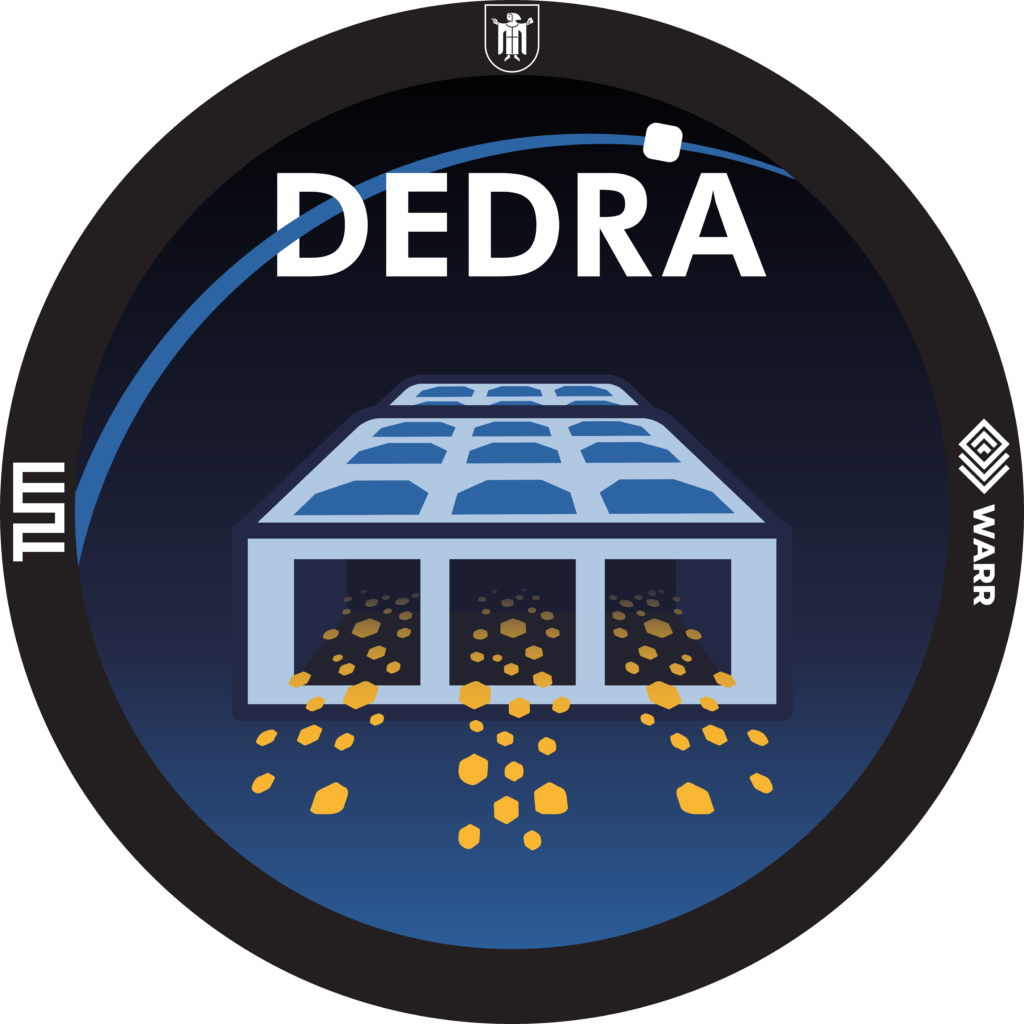
In over 50 years of exploring space, humans have accomplished wonderful things, but we’ve left behind a lot of trash floating around Earth. Right now, there’s more than 11,500 tons of it in orbit! These range in size from big chunks to very tiny particles. Because we have limited control over these particles and objects, and observing them is often very challenging, it is difficult to tell how many of these particles are out there.
That’s why we, a group of motivated students, have decided to develop DEDRA: the DEbris Density Retrieval and Analysis Sensor. DEDRA is designed to study and measure the tiniest pieces of space debris and small meteoroids that are orbiting Earth. The main goal is to gather detailed information about how many of these small objects are out there, how heavy they are, and how fast they are moving. This important data will help check and improve the accuracy of existing space debris models created by organizations like ESA and NASA. These models help scientists and engineers understand and predict where debris will be in space, which is crucial for the safety of satellites and space missions.
The latest figures related to space debris, provided by ESA’s Space Debris Office at ESOC, Darmstadt, Germany.
DEDRA is a small box-shaped sensor and can be carried on small missions, such as CubeSats with just one or with many sensors in order to maximise detection. The working principle behind DEDRA is “impact ionisation”. This is when tiny bits of space junk crash into the sensor at very high speeds, they create a little spark or charge. DEDRA measures this spark. From how big the spark is, it can tell us how heavy the space junk was and how fast it was moving.
If you are interested on reading more about DEDRA, check out our publications!
- Oikonomidou X., Braun V., Pail R., Gruber T., et al., (2021). MOVE-III – An In-Situ Detector to Support Space Debris Model Validation, Proceedings of the 8th European Conference on Space Debris – ESA
- Oikonomidou X., Karagiannis E., Firmbach F.S., Schweinfurth A.G., et al., (2022). MOVE-III: A CubeSat for the detection of sub-millimetre space debris and meteoroids in Low Earth Orbit, Frontiers in Space Technologies
- Schweinfurth A.G., Firmbach F.S., Pucknus P., Zorbach N., (2023). MOVE-III and DEDRA: In-Situ Sub-millimetric Space Debris and Micrometeoroid Detection and Characterisation, Proceedings of the 2nd NEO and Debris Detection Conference – ESA
If you would like to learn more about the dangers of space debris, be sure to visit the interactive website spacetrashsigns.org developed by Serviceplan Innovation. There you can explore the different dangers posed by space debris in a particularly creative way.
Space Trash Signs — Visualizing the consequences of space pollution with constellations made from space debris.
Learn more at: spacetrashsigns.org

The Great 404, a universal phenomenon we have all faced when lost in digital space, signifies the loss of internet access as a result of debris collision. It was named after the network error message of the same name, associated with poor connectivity and broken links. 
The Broken Compass, a malfunctioning beacon that leads to nowhere, was named after the device that has become synonymous with orientation. Depicting the modern direction arrow used in navigation apps, it signifies the loss of satellite navigation systems as a consequence of debris collision. 
The Lost Harvest symbolizes the malnourishment of our people and the depletion of our planet’s resources. The constellation, which resembles a dying plant, signifies the loss of environmental data as a result of debris collision with an observational satellite.



